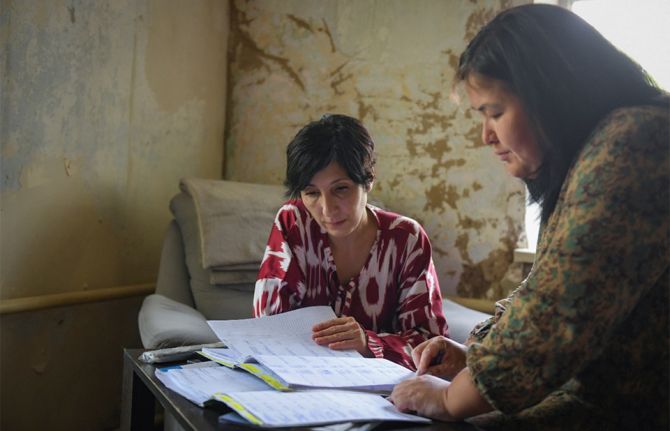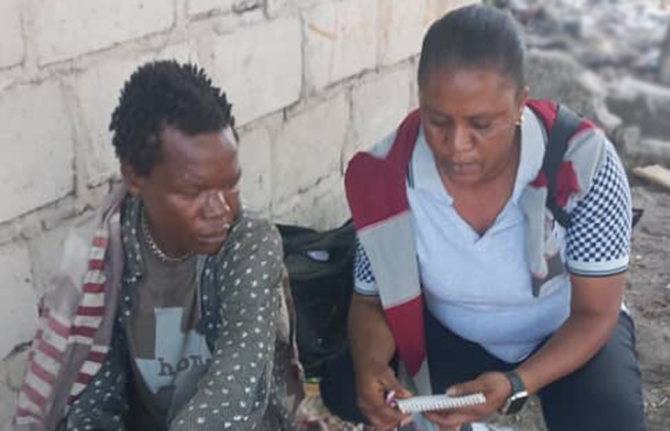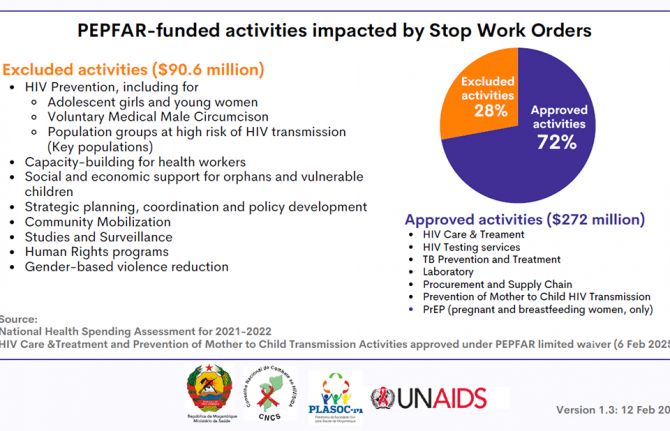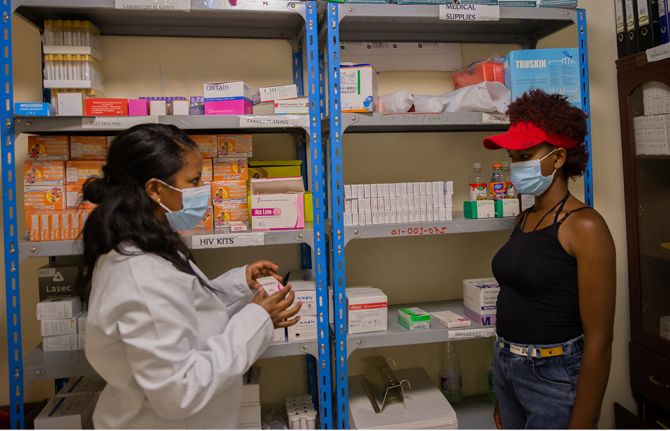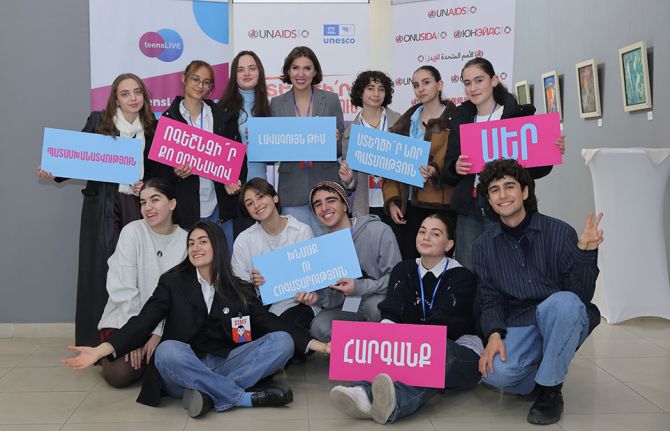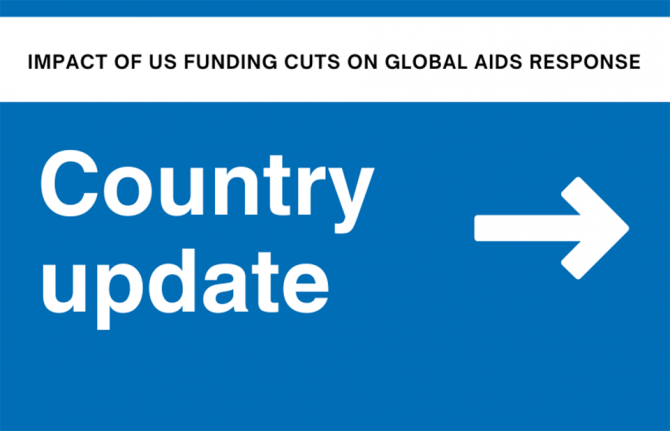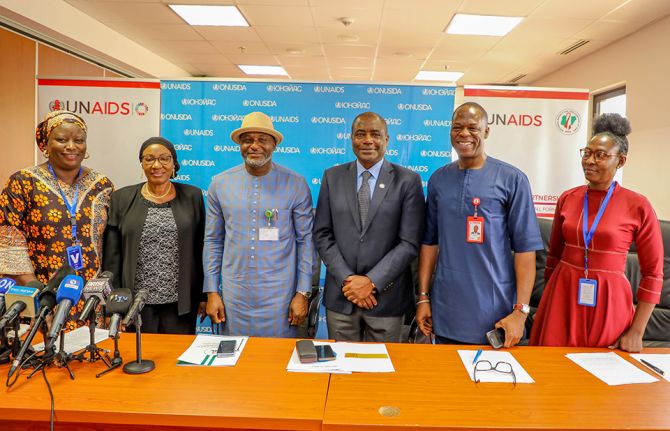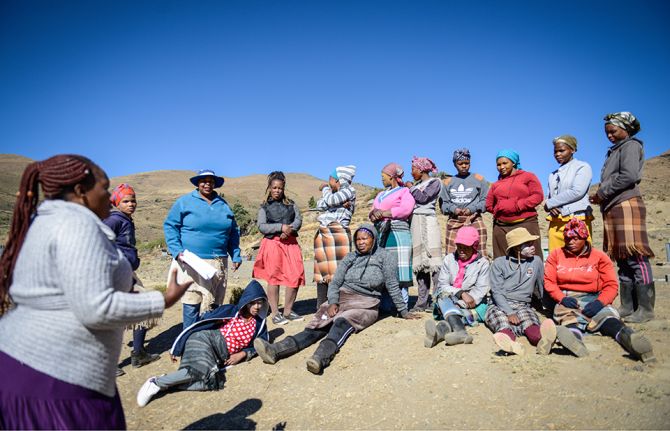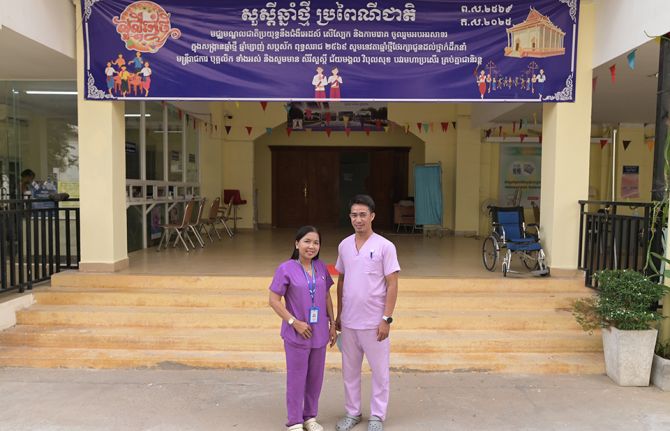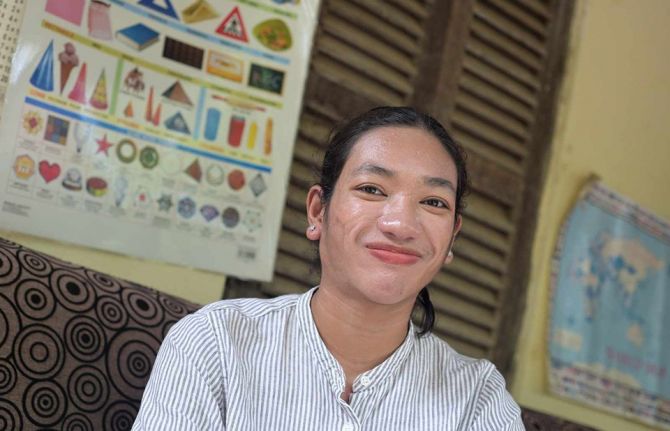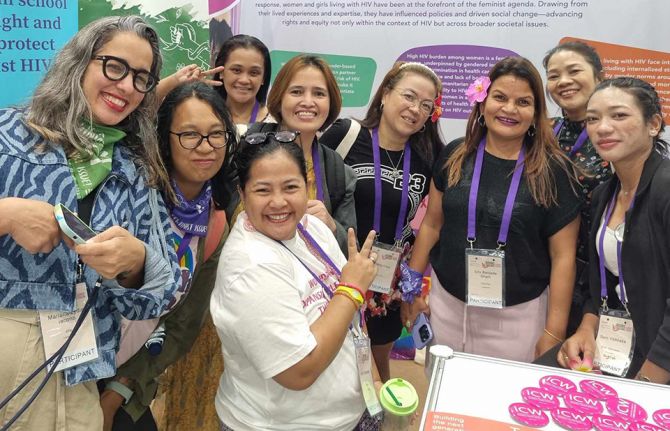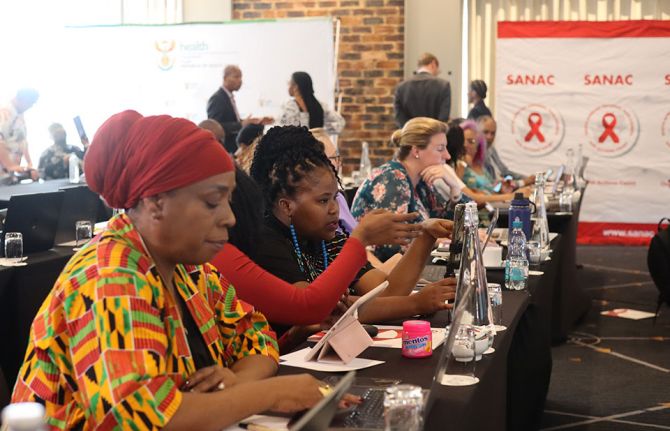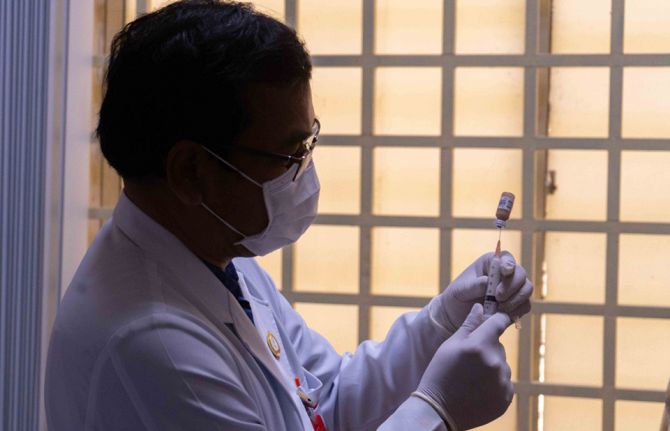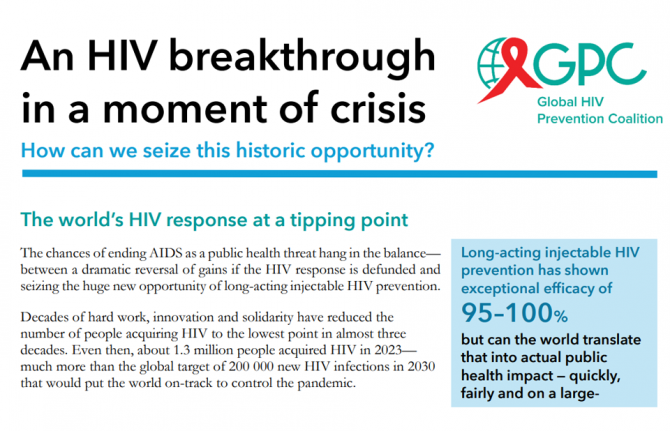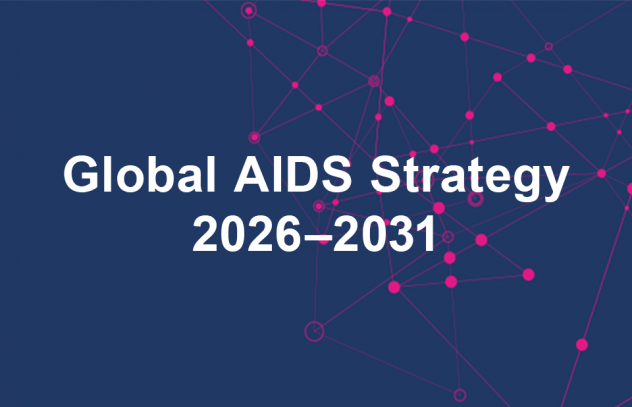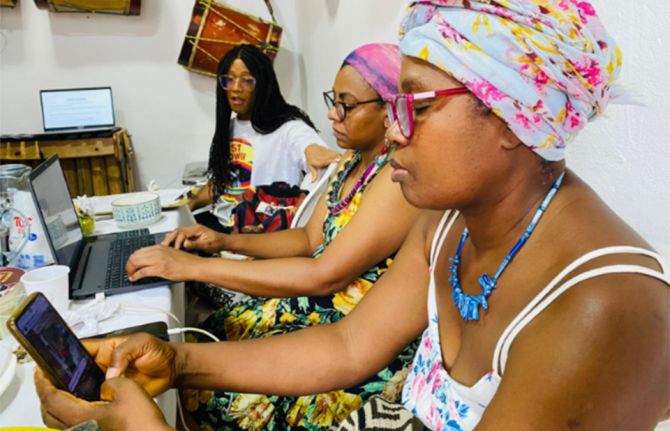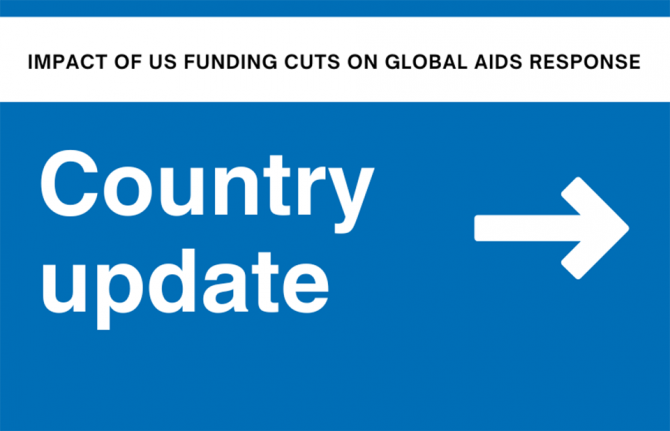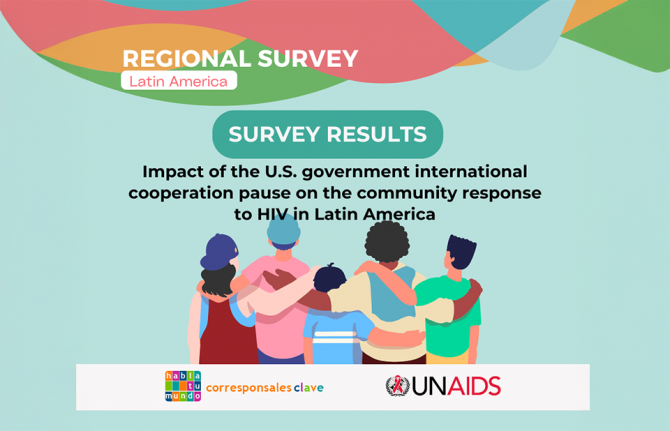

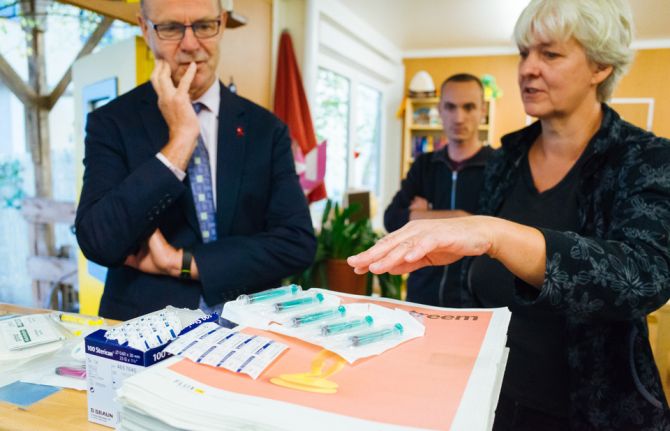

Feature Story
Germany: taking a human-rights based approach to injecting drug use
16 October 2018
16 October 2018 16 October 2018People who inject drugs often have one or more associated health issues. Drug use and mental health issues often coexist and drug use can increase the risk of contracting infections. Among people who inject drugs, for example, the risk of acquiring to HIV is 22 times greater than for people in the general population. People who use drugs are also widely stigmatized and marginalized, putting them out of reach of health and social services.
In line with Germany’s efforts to take a people-centred, human rights-based approach to health, the non-profit organization Fixpunkt has begun offering a safe haven for people who inject drugs. Fixpunkt provides a wide range of services, including support for people who are on opioid substitution therapy, counselling for mental health and social problems, basic health services, sterile injecting equipment and supervised drug consumption rooms and professional assistance in the event of overdose.
Controversial life-savers
For people who inject drugs, supervised drug consumption sites are a lifeline. They are also a critical entry point into the wider health and social support system. Currently, supervised drug consumption sites are available in six of the 15 federal states in Germany. The state of Baden-Württemberg, for example, has just decided to create the legal provisions to allow the facilities and the first supervised consumption room is about to be opened in the city of Karlsruhe.
However, in the nine other federal states legal barriers currently prevent the provision of these potentially life-saving services. “More political and financial support is needed to fulfil the real potential of safe injection sites. For people who use drugs, living on the streets, these are life-saving facilities. They often do not have access to medical, health and other social services. In these facilities they can establish contact and trust and find help to change their situation,” said Astrid Leicht, Director of Fixpunkt.
The Deputy Executive Director, a.i., of UNAIDS visited one of Fixpunkt’s mobile sites on 15 October to see the impact of the services they provide. “This is an important step forwards for Germany. By taking a people-centred approach and ensuring that people who inject drugs have access to harm reduction and other health services, such as safe injection sites, Berlin will be able to stop new HIV infections among people who inject drugs and reduce the harms related to injecting drug use. More projects like Fixpunkt are need to ensure that no one is left behind.” The biggest challenge, he learned, is that there are not enough facilities or resources to provide optimal opening hours or accompanying outreach work within the neighbourhoods and communities.
Sylvia Urban, board member of Aktionsbündnis gegen AIDS and of Deutsche AIDS-Hilfe, said, “The decisions in Baden-Württemberg and Karlsruhe are ground-breaking. We hope that the remaining states and many cities will follow. These facilities save lives and prevent HIV infections. From a public health and HIV prevention perspective, there is no good reason not to provide supervised drug consumption rooms.”
High demand in southern Germany and Bremen
Supervised drug-consumption rooms are desperately needed in, for example, Mannheim, the city with the highest number of drug-related deaths in proportion to inhabitants, as well as in Stuttgart, Munich, Nuremberg, Augsburg and Bremen, which have high numbers of preventable drug-related deaths.
Worrying situation in eastern Europe
UNAIDS and the World Health Organization recognize that supervised drug consumption facilities are a particularly important intervention. Yet, in eastern Europe there are very few facilities of this kind and in some countries, including the Russian Federation, there are virtually no harm reduction services provided at all amid a context of rising new HIV infections.
“Supervised drug-consumption facilities and harm reduction programmes are crucial components of HIV and hepatitis prevention. The tools and interventions to end the epidemics are all available, but many governments prevent their implementation,” said Sylvia Urban, from Deutsche AIDS Hilfe. “Only with services to minimize the negative health impacts of drug use can the HIV epidemic be stopped. In order to achieve this, legal and other barriers, including stigma, need to be removed.”
Resources
Region/country
Related

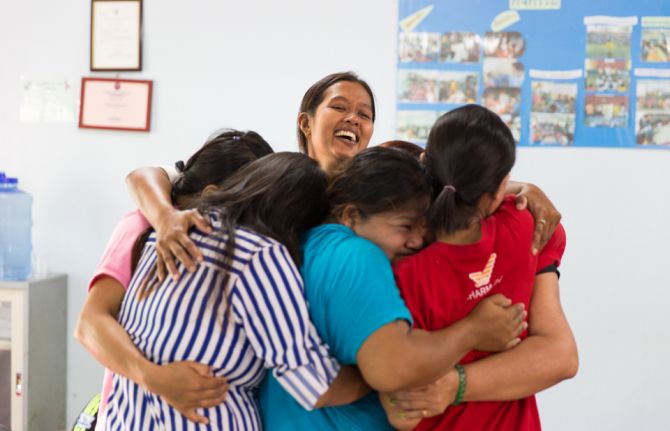
Feature Story
Better integration of mental health and HIV services needed
10 October 2018
10 October 2018 10 October 2018World Mental Health Day is observed on 10 October each year. This year, UNAIDS is highlighting that governments need to do more to integrate mental health and HIV services.
People living with HIV are at a greatly increased risk of developing mental health conditions, often suffering from depression and anxiety as they adjust to their diagnosis and adapt to living with a chronic infectious disease.
People living with mental health problems can also be at higher risk of HIV. The risks are exacerbated by low access to information and knowledge of HIV, including how to prevent it, injecting drug use, sexual contact with people who inject drugs, sexual abuse, unprotected sex between men and low use of condoms.
“HIV affects the most vulnerable and marginalized in society, who are also disproportionally affected by mental health issues,” said Michel Sidibé, Executive Director of UNAIDS. “By integrating HIV and mental health services we will be able to reach more people with the specialist care and life-saving support they urgently need.”
Currently, very few health services are addressing the HIV-related needs of people living with mental health issues or the mental health issues of people living with HIV. This situation needs to change. Studies conducted over five continents have estimated that HIV prevalence among people living with severe mental disorders could be between 1.5% in Asia and up to 19% in Africa.
People living with HIV can experience mental health issues that can affect quality of life and stop them seeking health care, adhering to treatment and continuing in care. Studies across 38 countries show that 15% of adults and 25% of adolescents living with HIV reported depression or feeling overwhelmed, which could be a barrier to adherence to antiretroviral therapy.
In addition, treatment itself can cause a wide range of side-effects on the central nervous system, including depression, nervousness, euphoria, hallucinations and psychosis. Studies in Africa found a 24% prevalence of depression among people living with HIV.
Identifying mental health issues among people living with HIV is critical; however, far too often those go undiagnosed and untreated. There are many reasons for this, all of which need to be addressed. People may not want to reveal their psychological state to health-care workers for fear of stigma and discrimination and health-care workers may not have the skills or training to detect psychological symptoms or may fail to take the necessary action for further assessment, management and referral if symptoms are detected.
Mental health services should ensure access to voluntary and confidential HIV testing and counselling for people who may be at increased risk of HIV. Primary health-care providers must be trained to recognize and treat common mental health and substance-use disorders and refer people to expert care.
Prevention, testing, treatment and care services must meet the complex medical, psychological and social needs of people affected by HIV and mental health issues, which can be best managed through integrated programmes. Integrated approaches need to be across sectors and involve social, legal, health-care and educational services and engage community-based organizations.
Integrating mental health and HIV programming prevents new HIV infections and improves the health and well-being of people living with and affected by HIV.
Related


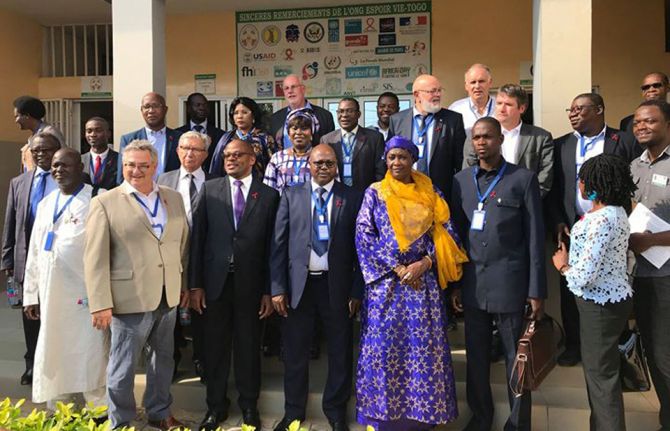
Feature Story
Francophone parliamentary network reiterates its commitment to respond to AIDS, tuberculosis and malaria
12 October 2018
12 October 2018 12 October 2018The Parliamentary Network to Fight AIDS, Tuberculosis and Malaria reaffirmed its commitment to increase funding to end the three diseases at its annual meeting in Lomé, Togo, held on 4 and 5 October. The network committed to urge the heads of state and government of the Francophonie to advocate for increased funding during the sixth replenishment conference of the Global Fund to Fight AIDS, Tuberculosis and Malaria, which will be held in Lyon, France, in October 2019.
“UNAIDS recognizes the important initiatives of French-speaking parliamentarians at both the national and international levels, as well as the advocacy and efforts of the Parliamentary Network to Fight AIDS, Tuberculosis and Malaria,” said Christian Mouala, UNAIDS Country Director for Togo.
The network, which is affiliated to the Parliamentary Assembly of the Organisation internationale de la Francophonie, also agreed that it will focus on the reform of punitive laws that perpetuate HIV- and tuberculosis-related stigma and discrimination.
“The responses to AIDS, tuberculosis and malaria require the commitment of all: national ministries of health, researchers, funders and, of course, parliamentarians. Only by pooling our efforts and with the strength of our parliaments and our members can we hope to, one day, overcome these epidemics,” said Didier Berberat, President of the Network to Fight AIDS, Tuberculosis and Malaria and Councillor for States, Switzerland.
UNAIDS has a cooperation agreement with the Parliamentary Assembly of the Organisation internationale de la Francophonie, which is due to be renegotiated this year.
Region/country

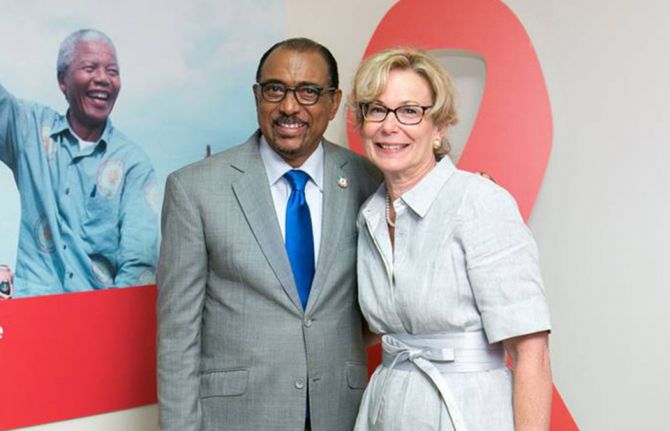
Feature Story
PEPFAR: the first 15 years
28 September 2018
28 September 2018 28 September 2018First announced during the 2003 State of the Union Address by the then President, George W. Bush, the United States President’s Emergency Plan for AIDS Relief (PEPFAR) is celebrating its 15th anniversary in 2018. Over the past 15 years, PEPFAR has dramatically changed the landscape of the global response to HIV, and bipartisan support across successive administrations since its launch has continued to ensure that PEPFAR expands it work towards controlling the AIDS epidemic.
Launched with an initial budget of US$ 15 billion over its first five years, PEPFAR has gone on to commit US$ 70 billion to the AIDS response. The funding has had remarkable results: in 2017, PEPFAR was supporting 13.3 million of the 21.7 million people living with HIV on treatment, including 1 million children, and in May 2018 announced that more than 14 million were on treatment.
PEPFAR has funded major HIV prevention programmes. The preventative effect of voluntary medical male circumcision on HIV transmission has been ramped up by funding more than 15.2 million circumcisions since 2003. Prevention of mother-to-child transmission of HIV services have ensured that 2.2 million babies have been born HIV-free, while 85.5 million people have accessed HIV testing services, allowing the people taking the tests to start on treatment or access HIV prevention services to stay HIV-free.
PEPFAR’s work with children orphaned or otherwise made vulnerable by HIV resulted in more than 6.4 million children being supported by PEPFAR in 2017, while the PEPFAR DREAMS programme saw new HIV infections among adolescent girls and young women drop by 25–40% in those locations in which the programme was implemented.
On 27 September PEPFAR published its 2018 progress report, showing the progress made one year into its 2017–2020 strategy. PEPFAR supports the AIDS response in 53 countries—of those, 13 are already on track to control their HIV epidemics by 2020, while many more could still do so through scaling up resources and policies to ensure access to HIV prevention and treatment services.
“The contributions of PEPFAR have transformed the lives of people living with or affected by HIV around the world,” said Michel Sidibé, Executive Director of UNAIDS. “We are very proud of our longstanding partnership and look forward to continuing to work closely together to deliver results for men, women and children, particularly the most marginalized.”
Region/country

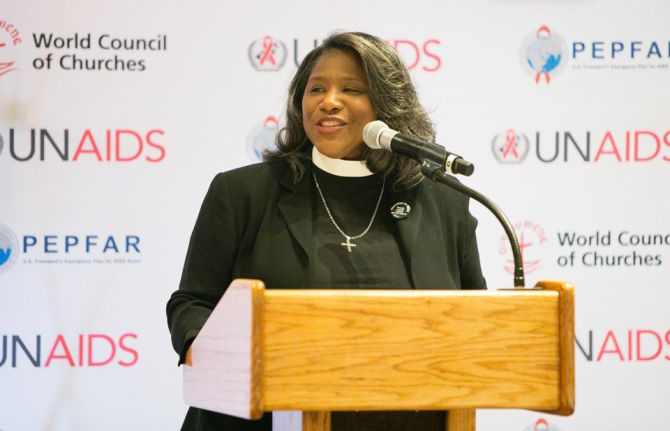
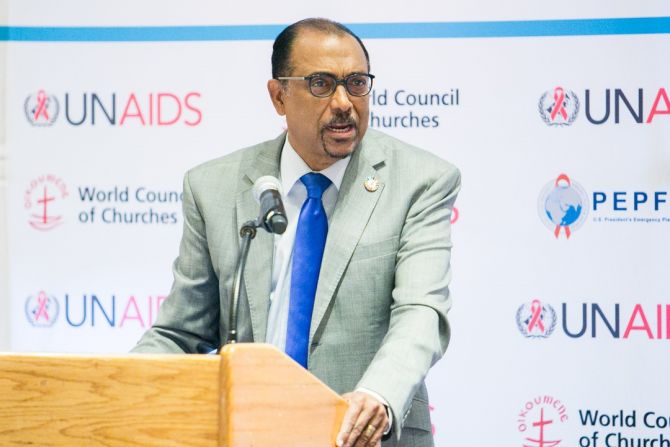
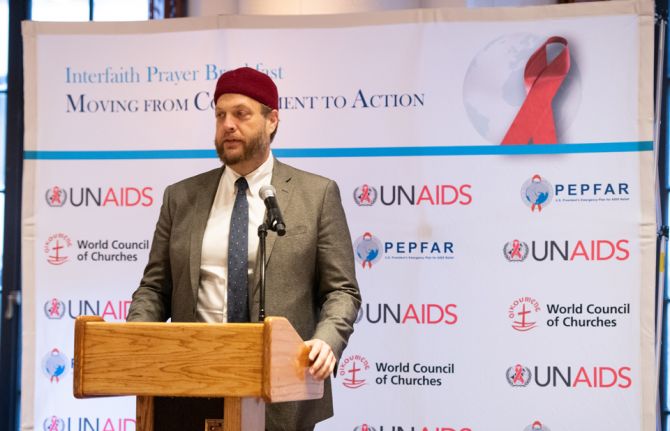
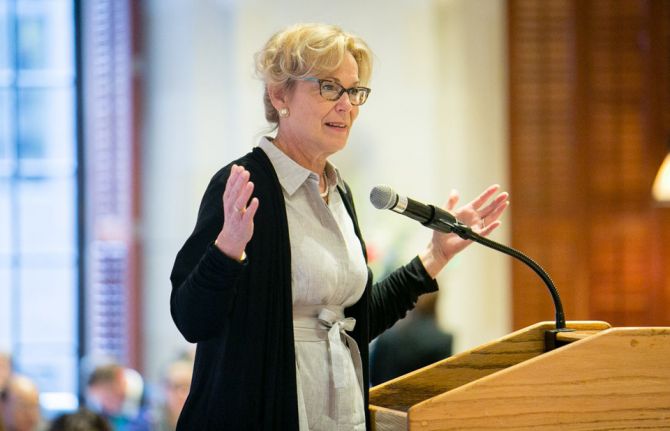
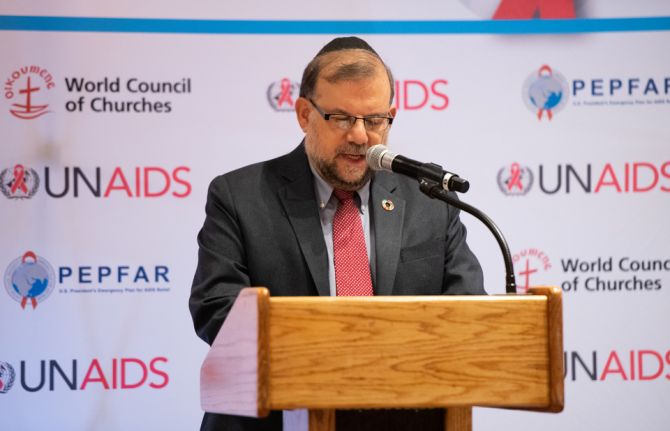
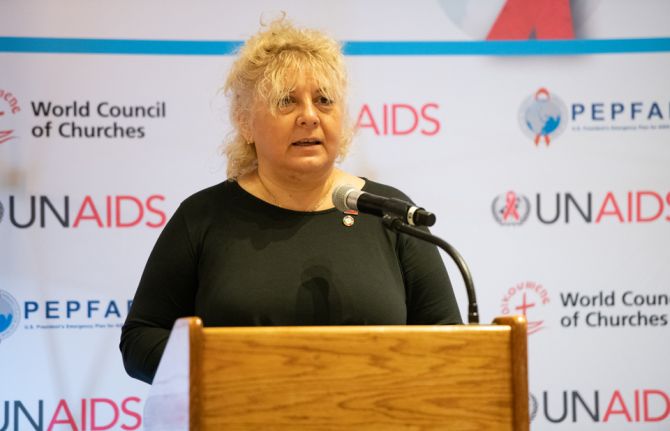
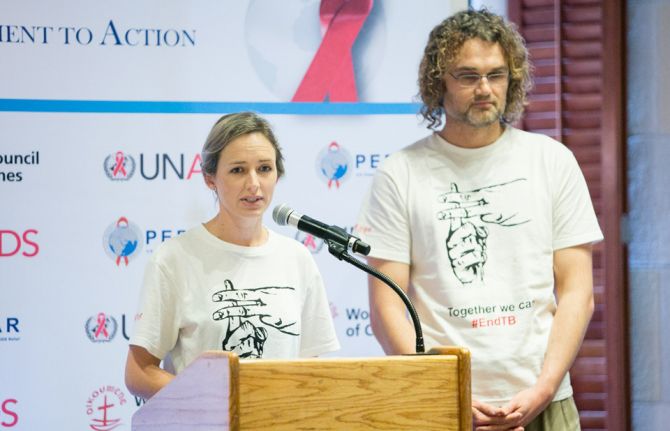
Feature Story
Building faith-based partnerships to end AIDS and TB among children and adolescents
28 September 2018
28 September 2018 28 September 2018Faith-based organizations have long played a critical role in the response to tuberculosis (TB). Many faith-based health service providers have implemented effective TB/HIV responses modelled on decades of work on TB. Today, faith-based organizations are delivering effective, high-quality TB/HIV services that complement national public health programmes in the countries most affected by TB and HIV.
Successful TB/HIV responses address both the biomedical and the social determinants that underpin these illnesses, such as poverty, inequality, situations of conflict and crisis, compromised human rights and criminalization. Children and adolescents are particularly vulnerable to infection and the impact of TB/HIV on their families. Because they have positions of trust at the heart of communities, faith-based organizations can provide services and support that extend beyond the reach of many public sector health systems.
To provide an opportunity to strengthen relationships and forge new partnerships, on 27 September the World Council of Churches–Ecumenical Advocacy Alliance, in collaboration with UNAIDS, the United States President’s Emergency Plan for AIDS Relief (PEPFAR) and the United Nations Interagency Task Force on Religion and Development, hosted an interfaith prayer breakfast on the sidelines of the 73rd Session of the United Nations General Assembly in New York, United States of America. Keynote speakers and table discussions focused on the outcomes of the United Nations High-Level Meeting on Tuberculosis, which took place on 26 September, and examined how the longstanding experience of faith-based organizations in responding to TB/HIV can support the new declarations agreed by Member States during the historic high-level meeting.
The participants included faith leaders and health service providers from different religious traditions. Survivors of multidrug-resistant TB brought a powerful sense of urgency and reality to the discussion. The participants renewed their call to national governments to not only maintain, but increase, support in order to end AIDS and TB as public health threats by 2030.
Quotes
“We are grateful for the advocates who call us out when things don’t go well and hold us to account. I leave here this week grateful that when the community of faith come together with governments and funders we can achieve our goals. You make us proud.”
“We need each other. Faith leaders, please help us to end stigma and discrimination. It is unacceptable that 660 children die of tuberculosis each day; 90% of children who die from tuberculosis worldwide are untreated. And just 50% of children living with HIV are on treatment. What is most important is working together with compassion, love, generosity, empathy and kindness—with these, we will change the face of the HIV and tuberculosis epidemics together.”
“For many of us, this is both personal and real. My husband’s grandfather died of tuberculosis when his father was young. Our hope is that this breakfast will strengthen old relationships and build new partnerships to address tuberculosis and HIV with concrete actions that will bring abundant life to all.”
“I saw on the X-ray the big hole in my lung and thought, why did I get multidrug-resistant TB? I had dedicated my life to caring for people. Later, I was fortunate to get on a trial of the first new tuberculosis drug in 40 years. It saved my life and I can now continue to speak and advocate so that many more can live.”
“Our response to tuberculosis and AIDS would not have been and will not be the same as it is today without the faith community and now there are five critical actions we need to take together. Educate, advocate and fight stigma. Continue to fight for patient-centred care. Give voice to the voiceless, especially the children. Advocate for resources to end tuberculosis and HIV. Continue to push to make yourselves a part of the discussion.”

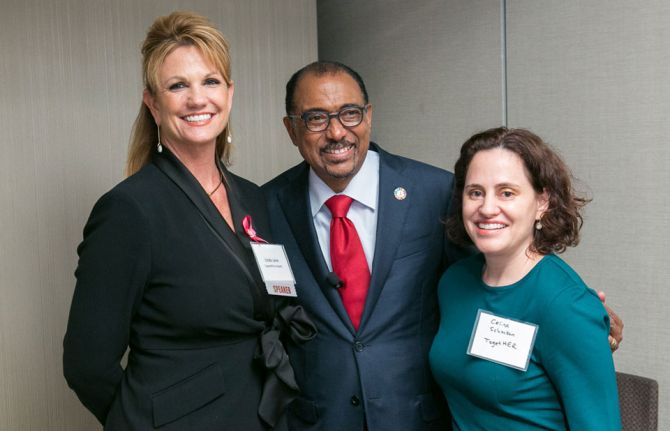
Feature Story
Cervical cancer and HIV—two diseases, one response
01 October 2018
01 October 2018 01 October 2018Cervical cancer—an illness that can be prevented by vaccination against the human papillomavirus (HPV) and that is curable if detected and treated early—is developed by more than 500 000 women each year, half of whom die of the disease. If cervical cancer prevention, screening and treatment efforts are not urgently scaled up, it is projected that this number could double by 2035.
Cervical cancer is an AIDS-defining illness, since women living with HIV who become infected with HPV are more likely to develop pre-invasive lesions that can, if left untreated, quickly progress to invasive cancer—women living with HIV are four to five times more likely to develop invasive cervical cancer. HPV infection has been found to significantly increase the risk of HIV transmission for both men and women.
Thanks to HIV treatment, many more women living with HIV are living long and healthy lives, but it is imperative that women living with HIV do not succumb to other illnesses, including cervical cancer. “It makes no sense to save a woman’s life from AIDS, only to let her die from treatable or preventable cancer,” President George W. Bush, whose George W. Bush Institute is leading efforts to end AIDS and cervical cancer, said in October 2015.
Nine out of 10 women who die from cervical cancer live in low- and middle-income countries. Given that the burden of HIV is primarily felt in low- and middle-income countries, and particularly by adolescent girls and young women, responding to both cervical cancer and HIV together in those countries is vital. Unfortunately, however, most low- and middle-income countries with a high prevalence of HIV have limited programmes for cervical cancer prevention and control.
There is a growing awareness of the need to maximize synergies between the AIDS response and efforts to prevent, diagnose and treat cervical cancer through HPV vaccination, education, screening and treatment. Likewise, existing HIV programmes can play a strategic role in expanding cervical cancer prevention services.
Reducing deaths from cervical cancer requires a wide-ranging approach that includes the following:
- Health education, including age-appropriate comprehensive sexuality education.
- HPV vaccination for adolescent girls.
- Screening all women at risk of developing cervical cancer. Screening programmes should include HIV counselling, testing and treatment, as well as other sexual and reproductive health services and treatment of precancerous cervical lesions and invasive and advanced cervical cancer.
- Ensuring access to palliative care, when needed.
“All women living with HIV need access to information on HPV and should be offered cervical cancer screening and treatment if necessary,” said Michel Sidibé, Executive Director of UNAIDS.
In May 2018, the United States President’s Emergency Plan for AIDS Relief, the George W. Bush Institute and UNAIDS launched a joint effort through a US$ 30 million partnership to accelerate efforts in eight sub-Saharan African countries to ensure that women and girls living with HIV are a priority in national cervical cancer prevention and control programmes.
“Thanks to the generosity of the American people, the United States President’s Emergency Plan for AIDS Relief has saved the lives of millions of HIV-positive women around the world,” said Deborah Birx, United States Global AIDS Coordinator and Special Representative for Global Health Diplomacy, at the launch of the partnership in May 2018. “We must ensure these same women—mothers, daughters, aunts and grandmothers—who are living with HIV and thriving do not succumb to cervical cancer.”

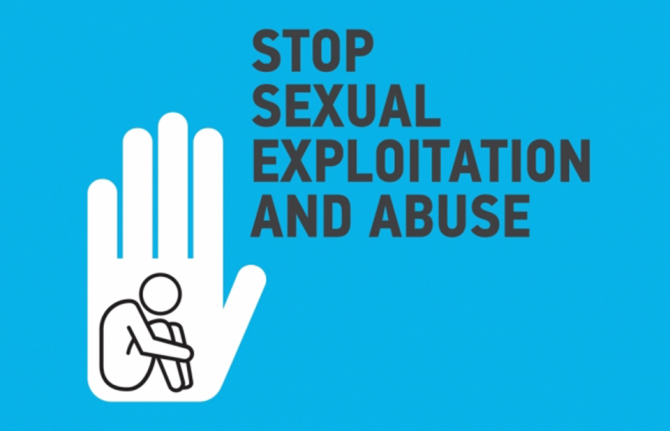
Feature Story
UNAIDS joins United Nations and world leaders to stand together against sexual exploitation and abuse
01 October 2018
01 October 2018 01 October 2018As part of the United Nations Secretary-General’s strategy to prevent and respond to sexual exploitation and abuse, global leaders have come together to issue a statement reaffirming their personal commitment to eliminate sexual exploitation and abuse across the United Nations system.
In the statement, the leaders recognize the unique responsibility of the United Nations to set the standard for preventing, responding to and eradicating sexual exploitation and abuse within the United Nations system, address its impact effectively and humanely and safeguard and empower survivors.
The leaders are 48 heads of state or government from the Secretary-General’s Circle of Leadership and 22 United Nations entities, including UNAIDS. UNAIDS is firmly committed to zero tolerance for sexual exploitation and abuse anywhere and recently hosted a high-level event with the African Union during the 73rd session of the United Nations General Assembly to tackle sexual and gender-based violence in humanitarian crises.
In the statement, the leaders recognize the shared responsibility of the United Nations and its Member States to protect survivors and whistle-blowers and take appropriate action against perpetrators. They also express their commitment to working together to implement the United Nations Secretary-General’s strategy, which outlines four main areas of action: putting victims first; ending impunity; engaging civil society and external partners; and improving strategic communications for education and transparency.
Click here to read the full statement.
Related

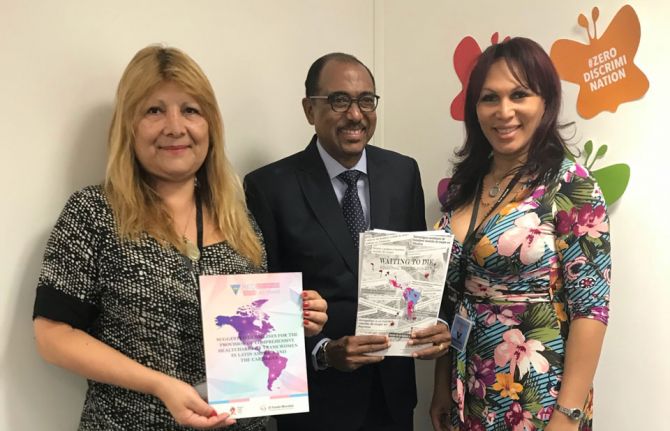
Feature Story
REDLACTRANS’ struggle for transgender rights
01 October 2018
01 October 2018 01 October 2018There are still alarming levels of violence against transgender people, and a lack of recognition of their rights. During a visit to UNAIDS headquarters in Geneva, Switzerland, on 18 September, Marcela Romero and Venus Tejada, representatives of the Latin American and Caribbean Network of Transgender People (REDLACTRANS), shared the startling fact that transgender women in the region have a life expectancy of only 35 years.
During the visit, Ms Romero and Ms Tejada met with the UNAIDS Executive Director, Michel Sidibé, and spoke about REDLACTRANS’ work in 13 countries. A grant to REDLACTRANS from the Global Fund to Fight AIDS, Tuberculosis and Malaria helped to establish a centre that collects testimonies and follows up cases of human rights violations committed against transgender women in Latin America and the Caribbean.
“Stigma, discrimination and violence against sexual and gender minorities prevent them from accessing health services,” said Mr Sidibé. “Everyone has the right to health, no matter their gender or sexual orientation. For that, we need zero discrimination for everyone, everywhere.”
Ms Romero and Ms Tejada also presented Mr Sidibé with a copy of REDLACTRANS’ report, Waiting to die, which compiles cases of human rights violations against transgender people and gives recommendations to decision-makers.
“Stigma and discrimination is a barrier to the services we need to stay healthy. Some transgender women are dying due to lack of access to treatment. Without comprehensive health care, there are no equal rights nor true democracy,” said Ms Romero
Since its creation in 2006, REDLACTRANS has promoted the development of gender identity laws. In Argentina, the Plurinational State of Bolivia, three federal districts of Mexico and Uruguay, where gender identity laws have been enacted, transgender rights are increasingly enforced and, consequently, transgender people can access health-care services. Such laws have brought about positive changes in the services provided to transgender people and resulted in less stigma and discrimination in health-care settings. “Without identification, one cannot travel, register for school or access many services that are essential to function in society,” said Ms Tejada.
Ms Romero and Ms Tejada called on UNAIDS to address how forced migration, persistent inequalities and poverty affect the quality of life of transgender women.


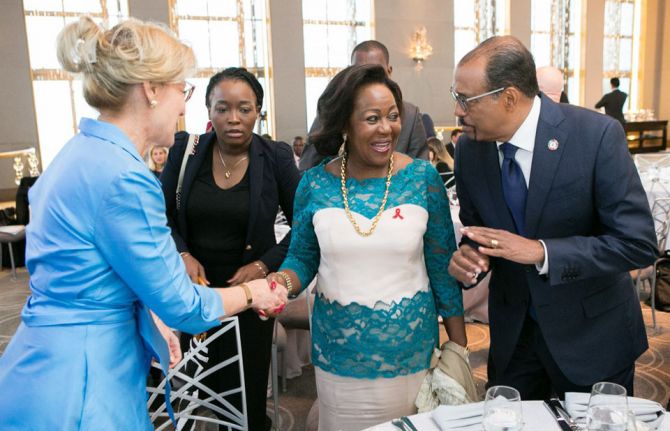
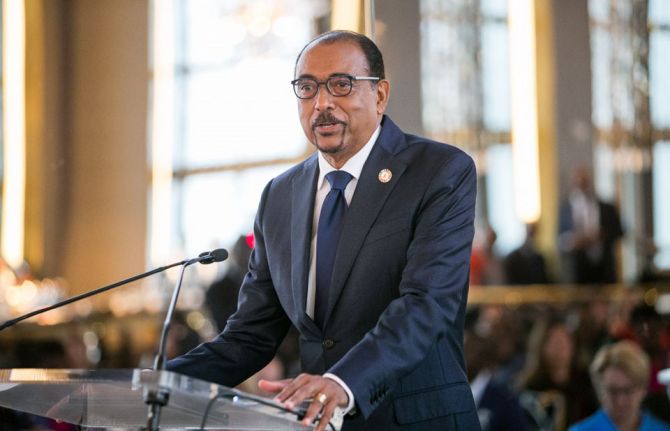
Feature Story
First ladies of Africa working to stop new HIV infections among children
25 September 2018
25 September 2018 25 September 2018Of the 1.8 million children aged 0–14 years living with HIV globally, 1.7 million are in Africa. As part of efforts to eliminate mother-to-child transmission of HIV in Africa, the African Union and the Organisation of African First Ladies against HIV/AIDS (OAFLA), with support from UNAIDS, and partners launched a campaign called Free To Shine in early 2018.
Now the campaign is ready to be rolled out across 42 African countries but urgently needs funding. To enable the roll-out, the African Union and OAFLA held an event on the margins of the 73rd session of the United Nations General Assembly to help raise much-needed resources to support the campaign.
The roll-out of the campaign will allow OAFLA members to engage in community-level activities to help reduce stigma and discrimination at home and in the community, raise community awareness about the importance of adherence to treatment and retention in care for pregnant women and women who are breastfeeding and to promote male involvement.
As part of the campaign, the first ladies will also leverage their unique position to influence policy-makers and agenda-setters to better address the needs of women living with HIV—advocating for policies and laws that discourage stigma and discrimination based on HIV status and for the removal of user fees for pregnant women and women who are breastfeeding, as well as other barriers that limit access to HIV and health services.
The session was moderated by television and radio journalist Zeinab Badawi.
Quotes
“We are at a critical stage in eliminating new infections among children, particularly in areas of emergency, notably western and central Africa. I thank our founding partner, UNAIDS, for its unwavering commitment to ending AIDS in Africa and around the world."
“Everything changed when I found out I was pregnant and had an HIV test. What was meant to be one of the best days of my life came to be one of my hated moments. There was no psychosocial support. Mothers to Mothers was the missing link—it taught me how to take my medicines and how to fight the stigma around HIV. The best thing is that my baby was born free from HIV. Mothers to Mothers empowered me and together we are building healthier societies. We are raising the future, one mother, one baby, one community at a time.”
“AIDS is not over. It is the last mile, and the last mile is not easy. We need to be strong and ensure that this partnership with the Organisation of African First Ladies against HIV/AIDS is the one to end mother-to-child transmission of HIV. Your efforts will be critical to whatever we will be able to achieve.”


Feature Story
An opportunity to end two of the world’s deadliest infectious diseases: TB and HIV
26 September 2018
26 September 2018 26 September 2018The World Health Organization recently released its Global tuberculosis report 2018. Although it shows encouraging pockets of progress in responding to tuberculosis (TB) and HIV in some areas, it paints a rather bleak picture on ending the dual epidemics by 2030.
HIV is a relatively recent epidemic, having first been identified in the early 1980s; however, TB has been around for thousands of years. Archaeologists believe that TB affected the ancient Egyptians, with King Tutankhamun himself having possibly been affected.
Many famous people have fallen ill or died of TB over the years, including John Keats, Frédéric Chopin, Charlotte and Emily Brontë, Nelson Mandela and Franz Kafka, to name but a few. In the early twentieth century, supposed cures for TB included day-long bracing outdoor siestas in Swiss mountain sanitoriums, freezing cold showers and diets of up to 12 meals a day washed down with litres of milk and wine, and even staying in cowsheds, where the warmth and ammonia gases given off by the animals’ urine was supposedly a balm for infected lungs.
Effective medicinal treatment for TB became available in the mid-1940s and has changed little since. Today’s medicine, although toxic and antiquated, is incredibly effective and relatively cheap. However, finding people with TB to treat and ensuring that they stay on treatment poses problems and is particularly urgent for people living with HIV.
The World Health Organization estimates that in 2017 there were around 10 million people with active TB disease, 9% of whom were people living with HIV. Of the 10 million, approximately 3.6 million, or 36%, are “missing”, meaning that they may not have been diagnosed or properly treated. Among people living with HIV, the gap is wider, at 49%.
People living with HIV with latent TB are around 20 times more likely to develop active TB. Untreated TB is rapidly fatal among people living with HIV.
Fewer than 60% of TB patients are screened for TB, precluding treatment and resulting in preventable deaths. TB is the leading infectious killer globally and the leading killer of people living with HIV, accounting for one in every three AIDS-related deaths. In 2017, around 1.6 million people died of TB, including 300 000 people living with HIV.
Many breakthroughs can be achieved by improving collaboration between HIV and TB programmes to find and treat TB and HIV, including investing in diagnostics, vaccines and medicines, including preventive medicine and medicine to treat TB, including multidrug-resistant TB.
However, more commitment, investment and action are needed.
It is estimated that US$ 10.4 billion is required in 2018 for an effective response to TB in the 118 low- and middle-income countries that account for 97% of reported cases globally. The actual amount available in 2018 was US$ 6.9 billion—a shortfall of US$ 3.5 billion.
To respond effectively to HIV, UNAIDS estimates that US$ 26.2 billion will be required for the AIDS response in 2020. In 2017, US$ 21.3 billion was available in low- and middle-income countries—a shortfall of around US$ 5 billion. Only by filling the funding gaps will ending the epidemics start to become a reality.
With around 1.7 billion people, or 23% of the world’s population, infected with latent TB, of whom 5–10% have a chance of developing active TB disease, the world needs to take urgent action.
On 26 September, world leaders will come together at the United Nations in New York, United States of America, for the very first United Nations High-Level Meeting on Tuberculosis. As TB takes centre stage for one important day, the world has the opportunity to set some bold actionable targets to end two of the world’s leading infectious killers: TB and HIV.
To seize this opportunity would not only stop more than 6000 people dying every day from TB and HIV, but it would prevent new infections and bring the world a giant leap closer to improving global health, reducing poverty and achieving the Sustainable Development Goals.


